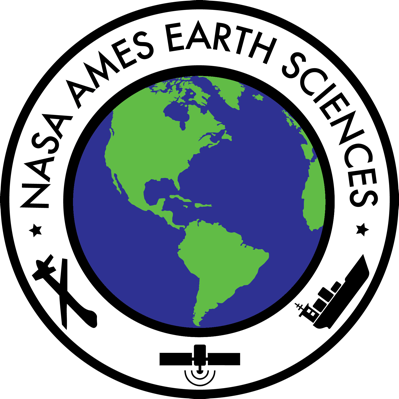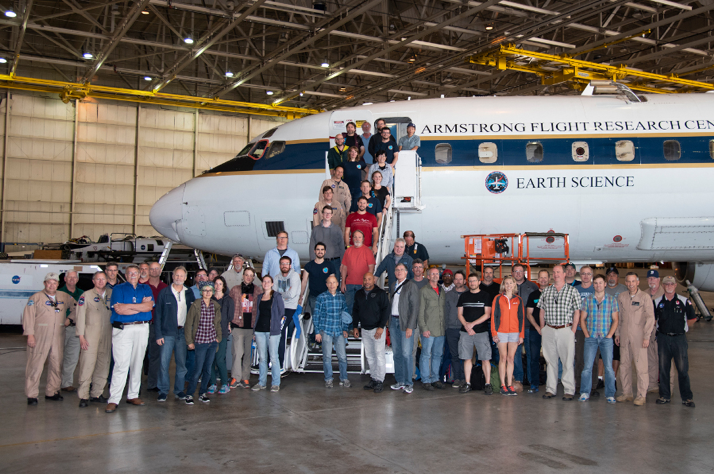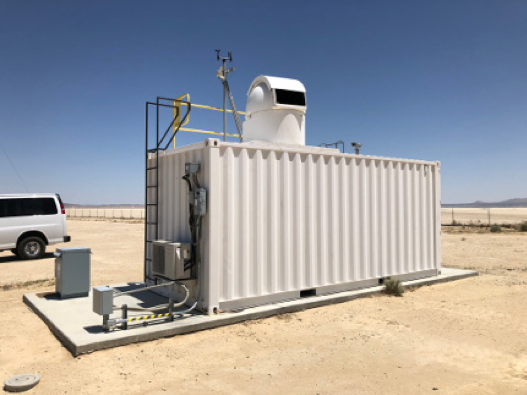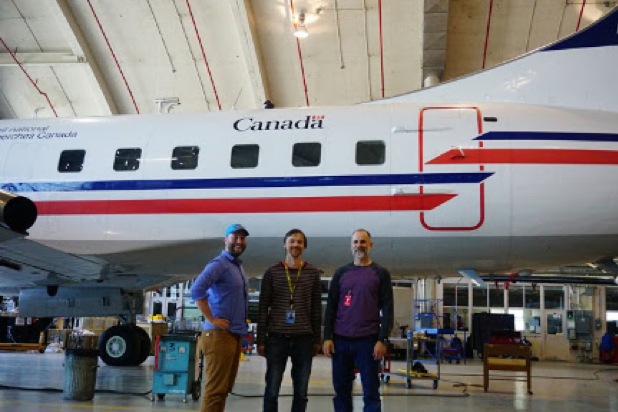Current:
The Earth Venture Suborbital 2 (EVS-2) Atmospheric Tomography Mission (ATom) fourth and final deployment has concluded. The NASA DC-8 returned to its home base in Palmdale, CA on May 21. ATom studies the impact of human-produced air pollution on greenhouse gases and on chemically reactive gases in the atmosphere. Dave Jordan and Erin Czech of the Earth Science Project (ESPO) are the ATom Project Manager and Deputy Project Manager respectively with many ESPO Team members serving as site manager at various locations in the deployment route. The Meteorological Measurement System (MMS) led by Paul Bui and his team is part of the DC-8 instrument payload. For more ATom news: https://espo.nasa.gov/home/atom/
ATom Deputy Principal Investigator Michael Prather, University of California, Irvine, summarizes the ATom accomplishments:
“ATom has been an incredible odyssey, sampling the whole global atmosphere 4 times, almost pole-to-pole. We visited some of the most remote corners of the globe mapping out “where pollution goes to die.” We have some amazing results documenting the pervasive human influence on the atmosphere in these far-flung places, as well as providing new basic atmospheric science on the life cycle of aerosol particles and on the photochemistry of the atmosphere.”
ATom Science Co-Investigator David Fahey, Director of the Chemical Science Division, NOAA Earth System Research Laboratory, praises the ESPO Team:
“Congratulations to the outstanding ESPO team. ATom has been logistically and scientifically successful beyond anything we imagined when writing the proposal a long time ago. ESPO makes it all look easy because the team is so committed to the mission and competent in all aspects of the effort.”
The NASA Earth Sciences Data and Information System Project has directed each Distributed Active Archive Center (DAAC) to establish and sponsor a User Working Group (UWG). The Land Processes DAAC UWG is responsible for providing consultation and recommendations covering a broad range of topics related to the DAAC systems, services, and capabilities. The group is responsible for representing the interests of the land remote sensing community in this process. The LP DAAC UWG will not be responsible for making decisions or implementing recommendations. The summer meeting of the UWG will take place May 30 and 31, 2018 Madison, WI. Dr. Dungan is a member of the UWG and will participate in this meeting. In addition, on Friday, June 1, she will visit the University of Wisconsin department of Forest Ecology & Environmental Studies, where Professor Mutlu Ozdogan’s research team is supported by the NASA Earth Exchange, which Dr. Dungan manages.
James Podolske and Kent Shiffer have completed moving the Total Carbon Column Observing Network (TCCON) instrument from JPL to Armstrong Flight Research Center (AFRC). It is back in operation in AFRC. TCCON is a global network of ground-based Fourier Transform Spectrometers (FTS) that measure the amount of carbon dioxide, methane, carbon monoxide, nitrous oxide and other trace gases in the Earth’s atmosphere. The AFRC-based TCCON FTS managed by Ames under the leadership of Laura Iraci was moved to JPL to assist in the thermal vacuum test of the Orbiting Carbon Observatory 3 (OCO-3). OCO-3 will be placed on the International Space Station in 2019 for Earth observation of CO2. This same TCCON was used for a similar test with OCO-2 before its launch on Jul. 2, 2014. Data from OCO-2 have provided important perspectives on the role of carbon on Earth.
To prepare for the July 2018 National Research Council-Canada (NRC) Oil Sands Measurement Campaign (OSMC) Roy R. Johnson and Samuel LeBlanc (BAER) traveled to Ottawa, Canada to integrate 4STAR (Spectrometer for Sky-scanning, Sun-Tracking Atmospheric Research) on the CV-580 and trained the NRC personnel to operate the instrument as well as data processing. The short test flight was successful.
NRC’s use of 4STAR will complement NRC’s planned on-board instrumentation and will provide important information on trace gas concentrations and aerosol properties essential to the understanding of aerosol formation and evolution processes. Providing the 4STAR instrument to NRC benefits NASA’s Earth Science Division by broadening the spectrum of research aircraft the instrument has flown on, providing data to NASA for future scientific analysis, and providing data on the instrument’s use, which will enhance future performance analysis, techniques, and instrument calibration/validation.
Upcoming:
- The Meteorological Measurement System (MMS) led by Paul Bui will participate in the NASA Student Airborne Research Program (SARP 2018). SARP 2018 will begin on Jun. 17, 2018 providing undergraduate students with hands-on research experience in all aspects of a major airborne scientific campaign. Paul and his Team will demonstrate the MMS operations and the application of its measurements.
- The AJAX Team will participate in the 2018 Railroad Valley solstice campaign.
- Rama Nemani will be working with US Forest Service Fire Lab to implement Geostationary Operational Environmental Satellite system (GOES) fire algorithms. In addition, he will work with a group of scientists at The Numerical Terradynamic Simulation Group (NTSG) at the University of Montana on ecosystem modeling on NASA Earth Exchange (NEX). At the same time, he will work closely with Prof. Steve Running from University of Montana on adapting MOD17/MOD16 algorithms to GOES data, Missoula, MT.






























